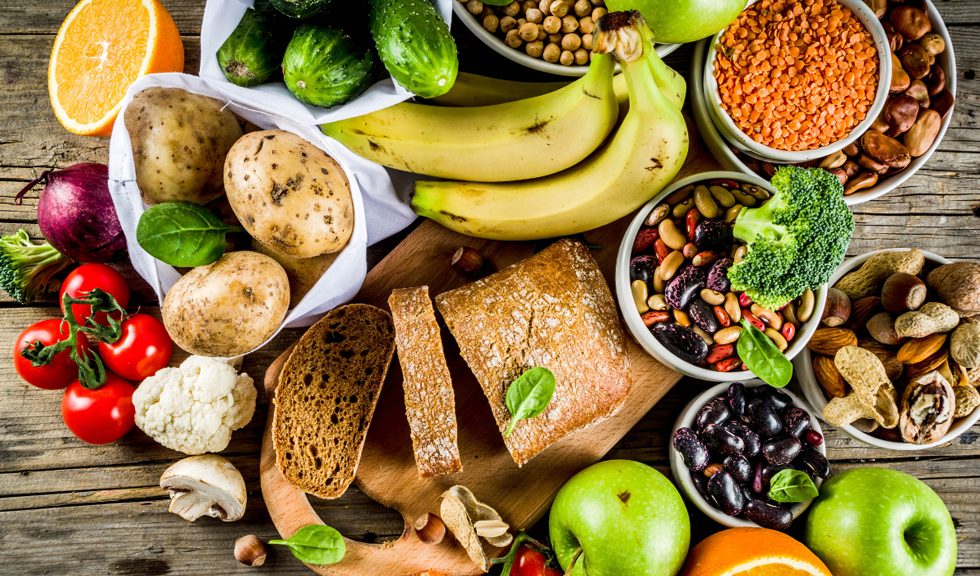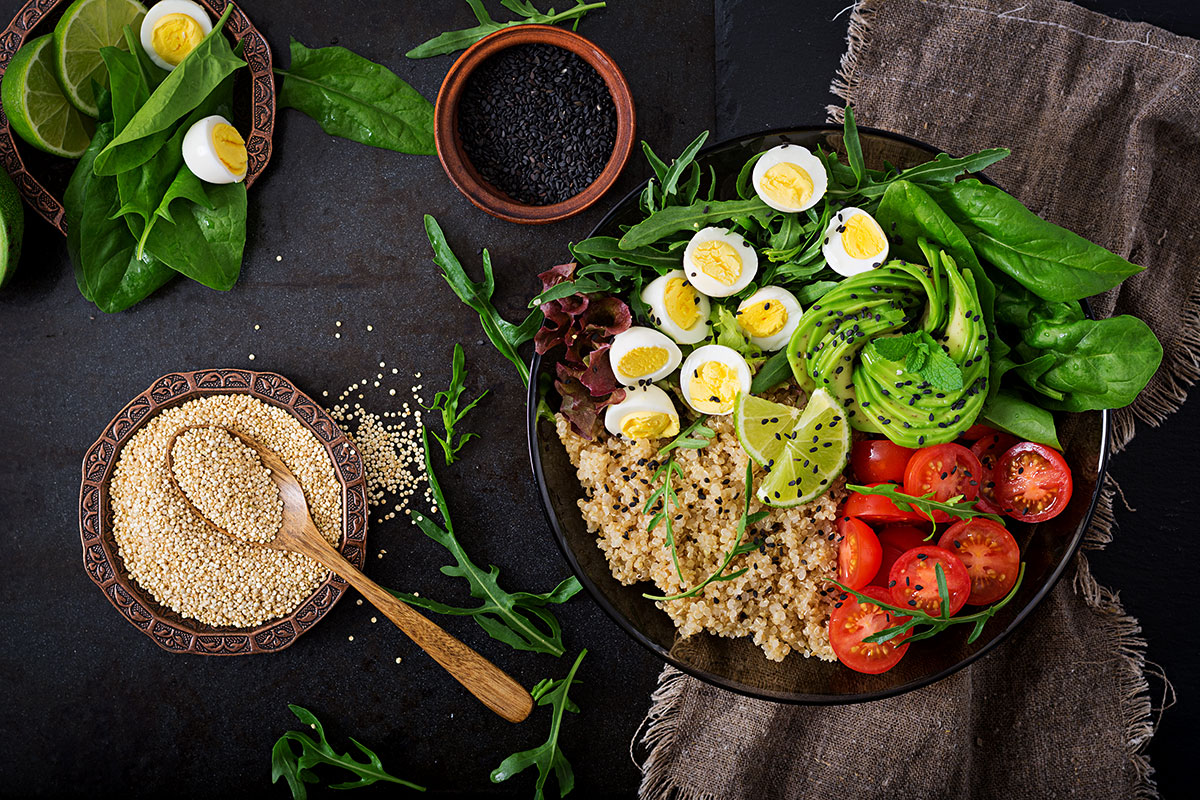The Role of Fiber in Diet: Benefits and Food Sources

Understanding Fiber and the Top 10 Fiber Foods
In the pursuit of achieving overall health and well-being, the importance of a well-rounded diet cannot be overstated.
Amidst the complex tapestry of nutrients, one often underestimated yet vital component stands out: dietary fiber. This unassuming hero plays a profound role in nurturing our bodies, supporting critical functions, and safeguarding against various health concerns.
Let’s examine how fiber impacts not only our digestive health but also our weight management, blood sugar control, heart health, and the well-being of our gut microbiome. Plus, discover the top 10 fiber foods that will help you harness its power.
What is Fiber?
Dietary fiber comprises the non-digestible parts of plant foods that process through our digestive system, providing a host of health benefits. It is categorized into two main types: soluble and insoluble fiber.
Soluble fiber readily mixes with water, contributing to the reduction of cholesterol levels and the stabilization of blood sugar levels. Conversely, insoluble fiber remains unaffected by water, but it enhances stool volume, facilitating consistent and healthy bowel movements.
In contrast to nutrients such as proteins, fats, and carbohydrates, fiber possesses a distinct quality—it does not undergo digestion or absorption within the small intestine, setting it apart as a unique dietary component.
Why is Fiber Important? The Benefits of Including Fiber in Your Diet
Fiber plays a pivotal role in maintaining our overall health due to its multifaceted benefits. Incorporating a diverse range of fiber-rich foods into your meals is a wise approach, as both soluble and insoluble fibers provide distinct and valuable health advantages.
Here are some of the most prominent benefits of including fiber in your diet:
Digestive Health
A key advantage of incorporating fiber into your diet is its ability to support digestive well-being. Soluble fiber softens stool and makes it easier to pass, reducing the risk of constipation. Insoluble fiber adds bulk to stool, preventing diarrhea and promoting regular bowel movements. Together, they support a healthy digestive system.
Weight Management
Fiber is a secret weapon for those trying to manage their weight. High-fiber foods are often more filling, which can help reduce overall calorie intake. Additionally, fiber slows down the digestion and absorption of nutrients, leading to increased feelings of fullness and decreased snacking between meals.
Blood Sugar Control
Soluble fiber has the potential to aid in the regulation of blood sugar levels by retarding the process of sugar uptake from the digestive tract. This attribute can prove especially advantageous for individuals who have diabetes or are at risk of its onset.
Heart Health
Fiber is recognized for its heart-boosting properties, as it has the potential to decrease LDL (low-density lipoprotein) cholesterol levels in the bloodstream, thereby mitigating the risk of heart disease. In addition to its cholesterol-regulating effects, a diet abundant in fiber has shown promise in reducing blood pressure and dampening inflammation, further fortifying its role in heart health.
Gut Microbiome Health
Fiber functions as a prebiotic, providing nourishment to the beneficial bacteria residing in your intestinal tract. A balanced gut microbiome is linked with a plethora of health advantages, such as enhanced digestive function, a bolstered immune system, and even potential enhancements in mental well-being.
Recommended Daily Fiber Intake
The suggested daily fiber intake fluctuates based on factors such as age, gender, and individual dietary requirements. Generally, adults are encouraged to target a daily fiber consumption of approximately 25-30 grams.
However, here are some general guidelines:
- Children (ages 1-3): 19 grams
- Children (ages 4-8): 25 grams
- Boys (ages 9-13): 31 grams
- Girls (ages 9-13): 26 grams
- Teen boys (ages 14-18): 38 grams
- Teen girls (ages 14-18): 26 grams
- Men (ages 19-50): 38 grams
- Women (ages 19-50): 25 grams
- Men (ages 51 and older): 30 grams
- Women (ages 51 and older): 21 grams
To monitor and calculate your daily fiber consumption, there are several options available, such as utilizing smartphone applications designed for this purpose or maintaining a personal food journal.
Top 10 Fiber Foods
Now, let’s take a closer look at the top ten fiber-rich foods that you can incorporate into your daily diet.
1] Whole Grains
Whole grains like oats, brown rice, quinoa, and whole wheat pasta are excellent sources of fiber. For example, approximately 5 grams of dietary fiber can be found in a one-cup serving of cooked quinoa.
2] Legumes
Beans, lentils, chickpeas, and peas are packed with fiber. A cup of cooked black beans contains roughly 15 grams of fiber.
3] Fruits
Many fruits, such as apples, pears, and berries, are rich in fiber. A medium apple with the skin contains approximately 4 grams of fiber.
4] Vegetables
Vegetables such as broccoli, Brussels sprouts, and spinach are rich sources of dietary fiber. For instance, a serving of cooked broccoli contains approximately 5 grams of fiber.
5] Nuts and Seeds
Almonds, chia seeds, and flaxseeds boast significant fiber content. In a quarter-cup serving of almonds, you can find approximately 3 grams of dietary fiber.
6] Bran and Bran Cereals
Bran cereal stands out as a dense reservoir of dietary fiber. A mere half-cup serving yields an impressive 12 grams of this essential nutrient.
7] Oats
Oats are a versatile and fiber-rich breakfast option. One cup of cooked oatmeal offers around 4 grams of fiber.
8] Popcorn
Interestingly, popcorn qualifies as a whole grain and represents a noteworthy fiber source. Approximately 3.5 grams of fiber can be found in three cups of air-popped popcorn.
9] Chia Seeds
These tiny seeds are incredibly fiber-dense. One tablespoon of chia seeds contains roughly 5 grams of fiber.
10] Flaxseeds
Flaxseeds are another fiber-packed option. Two tablespoons of ground flaxseeds provide about 4 grams of fiber.
Tips for Increasing Fiber Intake
Adding additional fiber into your diet is easier than you might think:
- Kickstart your mornings with a nutritious high-fiber cereal or a slice of whole-grain toast.
- Enhance the nutritional value of your meals by incorporating beans or lentils into soups, salads, and casseroles.
- Satisfy your midday cravings with wholesome snacks like fresh fruits, crunchy vegetables, or a small handful of nuts.
- Opt for whole-grain varieties when selecting bread, pasta, or rice to boost your daily fiber intake.
- Whenever feasible, keep the skins on when enjoying fruits and vegetables to maximize their fiber content.
- To prevent any potential digestive discomfort, make gradual adjustments to increase your fiber consumption over time.
Summing Up
Adding fiber to your diet is a very straightforward yet potent method for enhancing your overall well-being. Whether you’re looking to boost your digestive health, manage your weight, or control blood sugar, fiber-rich foods can play a vital role in achieving your nutritional goals.
Start small, make gradual changes, and enjoy the long-lasting benefits of a fiber-rich diet.

